New Hampshire is one of the smaller states, but it’s also rich in pegmatites that bear a ton of interesting minerals and gemstones. There’s a surprisingly large variety of rocks in the state, you just need to know what you’re looking for and where to find it.
That’s where I come in. Let’s look at a list of the rocks, minerals, and gemstones found in the state of New Hampshire.
1. Quartz/Amethyst
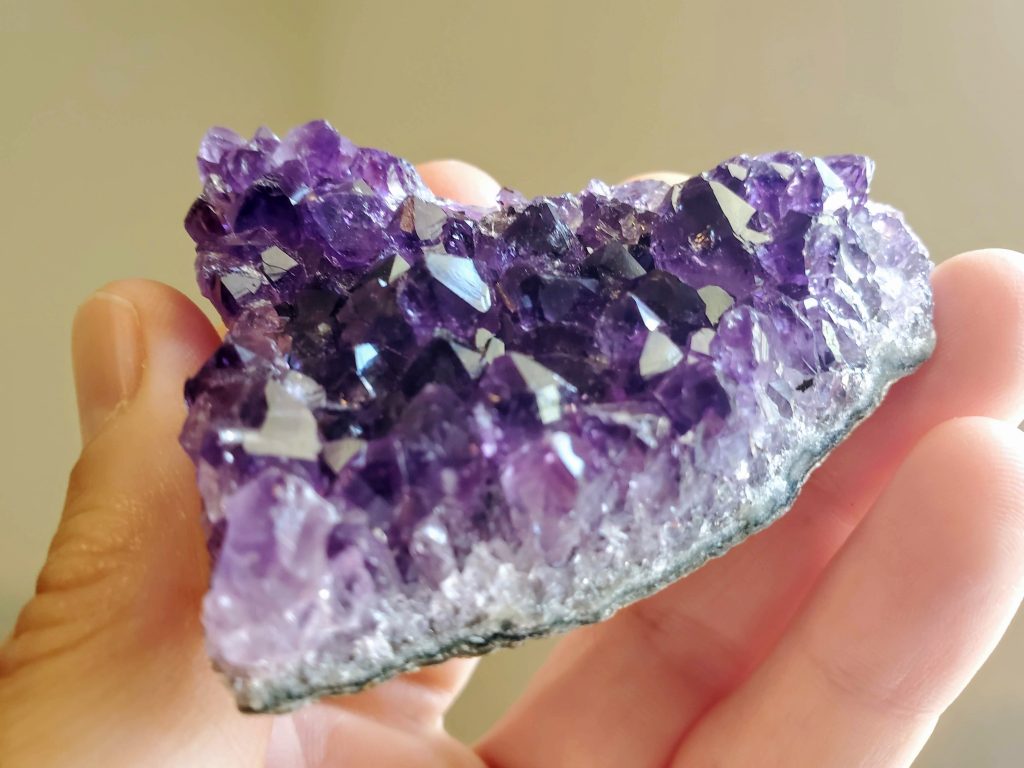
Quartz is among the most common minerals on the planet. It’s become the iconic image of a crystal, with six sides and a sharp pyramid termination on the top. Quartz crystals occur in a bewildering array of formations, from clusters to geodes to combinations with other minerals. Points are available almost everywhere, even in places that aren’t rock shops.
Amethyst is the purple variety of quartz. It’s colored by iron that’s ended up in the color centers of the crystals during their growth. This deep purple coloration has been revered for much of human history. In previous ages, very little good amethyst was available. It was often considered equal to gems like ruby and sapphire.
Both of these stones are found spread throughout the state. In such a small area there are over a hundred known occurrences of both, usually found in the pegmatites that contain most of the state’s gemstones.
These stones are everywhere in New Hampshire. It’s hard to list locations when there are hundreds of locales for each listed within such a small area. Among the better-known spots are Hurricane Mountain and quarries near Redstone. These areas are both rich with quartz and amethyst specimens, but they can be found in waterways, roadcuts, and small pockets across the entire state.
2. Apatite
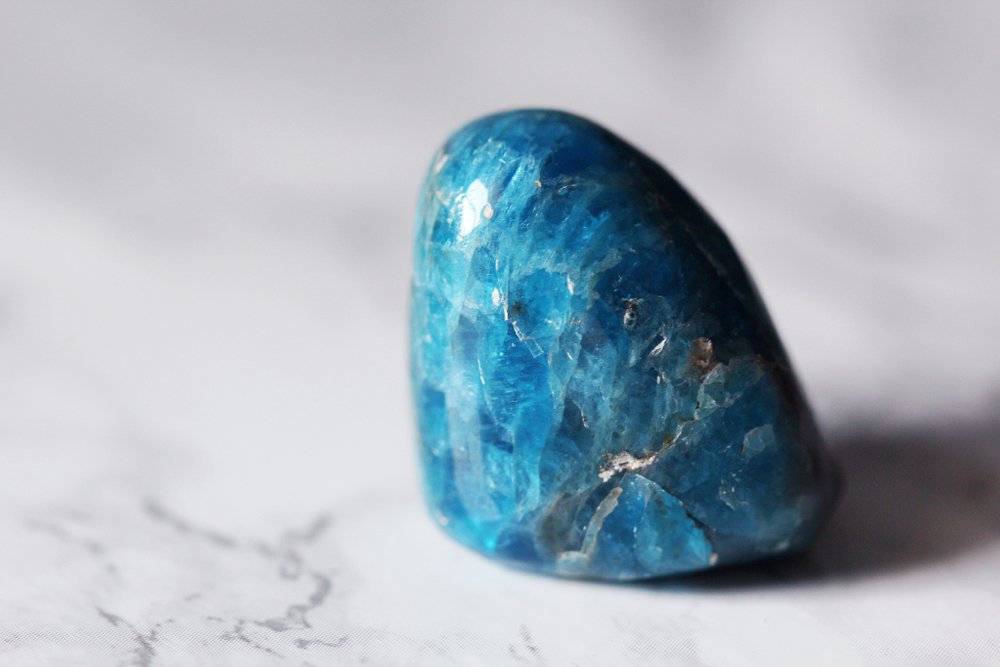
Apatite is a phosphate mineral, or rather a family of minerals. The minor chemical distinctions between them are small, similar to the differences in types of garnet. Apatite’s best-known form is a deep blue, with large granular crystals. It actually comes in a wide variety of colors and larger crystals are sometimes gem quality despite the soft surface of the stone.
Apatite often contains traces of rare elements. These can be rare earth metals, or even more “exciting” elements like uranium depending on the location. The majority of apatite isn’t of interest to collectors. Instead, it’s used as a source of phosphate for the fertilizer industry or as an ore for the trace elements contained within.
Apatite from this state tends to be either blue or white. The blue version is usually massive, meaning that it’s a coarse-grained rock composed of interconnected crystals. It can also be found as individual opaque white crystals at other times. The blue is usually more desirable for collectors, but it occurs in the same areas.
Apatite is spread across the state, but the majority of it lies between Lebanon and Laconia. Many sites are just off of the US 4 and the NH 104.
3. Staurolite
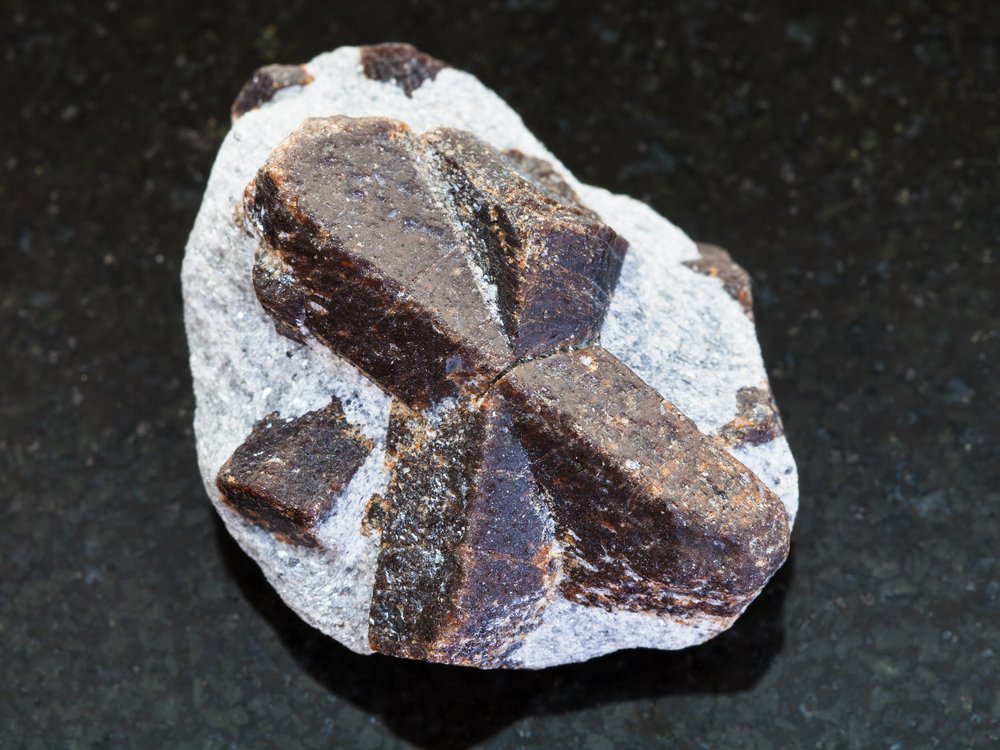
Staurolite is a relatively plain silicate mineral. It’s mainly known for the twinning of its crystals, which often occur at right angles. When the crystals are elongated they’re often referred to as “Fairy Crosses.” Well-formed crystals are highly sought after, with the most valuable being six-rayed stars of staurolite.
Staurolite is an odd one. It’s not used as a gemstone, it has no commercial use, and it’s not particularly interesting from a chemical standpoint. It’s definitely not boring, however, considering the way that it forms. The technical name for the crosses that emerge from this mineral is “cruciform penetration twinning.”
Staurolite from this state is usually the reddish variety. True crosses are relatively rare, with much of the material being single or misformed double crystals spread through the state. It can be found in schist materials, often alongside almandine garnet.
Staurolite can be found along large portions of western New Hampshire. Some of the best locations include Ruggles Mine and Pond Hill in Grafton County. These areas produce many of the specimens. As a bonus, they generally occur alongside garnets as well!
4. Tourmaline
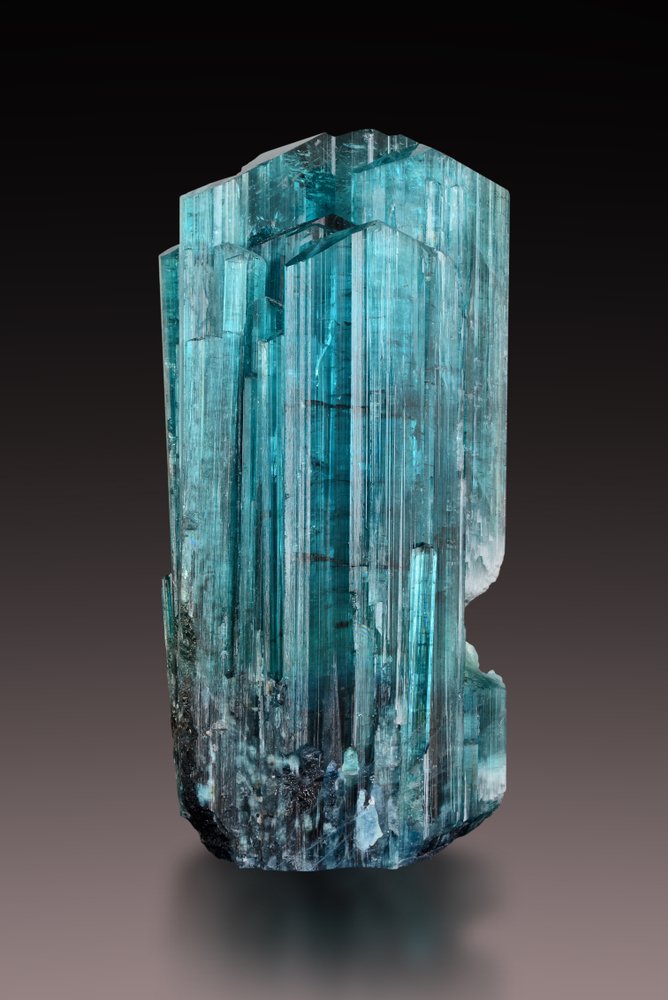
Tourmaline is a gemstone with many faces. While most know of rainbow tourmaline, and perhaps of the black variant schorl, there’s more to this gem than meets the eye. Some of the various colors of tourmaline are just as magnificent as the classic gemstones. The deep red of rubellite and the color of chrome tourmaline are just two examples among many.
Tourmaline’s fantastic colors and excellent hardness have made it a favorite gemstone for jewelry for quite some time. It’s not quite as hard as the classics, sitting at a 7.0 on the Moh’s scale, but it’s hard enough to last even in rings and bracelets. The crystals themselves are highly collectible and also find themselves set in jewelry raw.
The tourmaline from New Hampshire has a few varieties. The most common other than schorl is a blue variety. Some of this material could be called indicolite but the term is generally reserved for crystals that are gem quality. Schorl is more common and found in the same areas. There are also some other colors, including the occasional bits of rubellite.
If you’re looking to find tourmaline in this state, you’ll want to look at the following areas:
- Cheshire County
- Ruggles Mine
- Chadler Mine
The areas surrounding these mines or the mine’s tailings should yield some tourmaline. It’s actually spread across the state, but not as common as quartz.
5. Fluorite
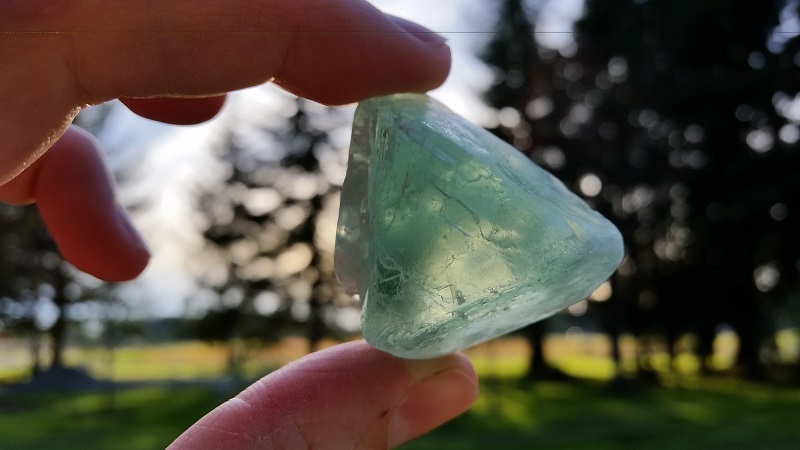
Fluorite is a colored crystal that’s a favorite among collectors. It actually remains affordable, even when you’re looking at great specimens with multiple colors. It’s used in the chemical industry as a source of fluorine as well. The mineral is comprised of calcium fluoride and forms as large crystals.
Fluorite is known for its color, although it’s actually a colorless mineral itself. Trace elements can alter the appearance. One of the most famous varieties of fluorite is Rainbow Fluorite. This variety is banded with purple and green, creating a pleasing stone. Since it’s found in large quantities its easy for collectors to acquire.
In New Hampshire, most of the crystals appear to be a light green. There are also yellow and rainbow varieties present in differing locations. Fluorite acquires color easily, so it can change rapidly in hue from place to place. Well-formed crystals are a common find.
The best place to look is Green Ledge or Victor Head. Both of these areas are known to host some great samples of this mineral.
6. Agate/Jasper/Chalcedony
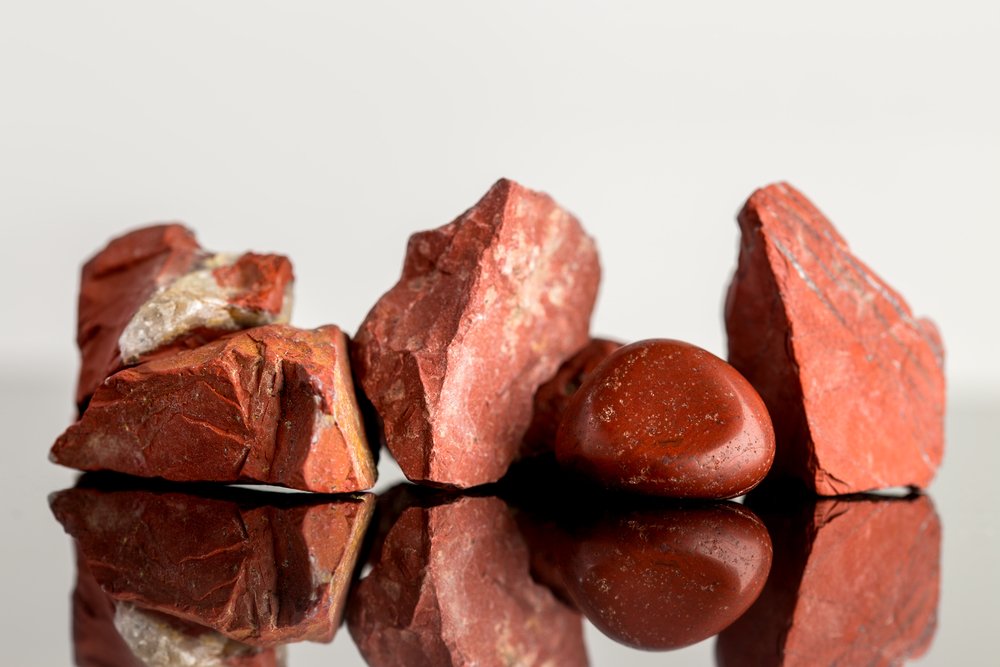
The series of cryptocrystalline silica minerals is actually rarer in the New England region than across most of the United States. Agate and chalcedony are very rare finds here, although still present on occasion. On the other hand, New Hampshire is known to house some very pretty jasper specimens if you know where to look.
These minerals are often hard to separate. Chalcedony forms the basis for them, but the exact definitions vary. The cryptocrystalline nature of these compounds is the result of the intergrowth of quartz and it’s polymorph moganite. As a general rule, jasper is opaque, agate is transparent but heavily included or banded, and chalcedony has fewer inclusions while remaining transparent.
Jasper from New Hampshire is primarily found in only a few different places. It’s generally of the “normal” variety which is red with white areas. While not the most unique jasper in the world, it’s definitely a pretty material and one that can be used well by lapidaries and carvers.
You’ll want to look in the following regions:
- Hillsborough County
- Belknap County
- Grafton County
Bits of washed up agate and jasper can also sometimes be found in waterways but they aren’t as common as in other states due to the area’s geological formation.
7. Pyrite
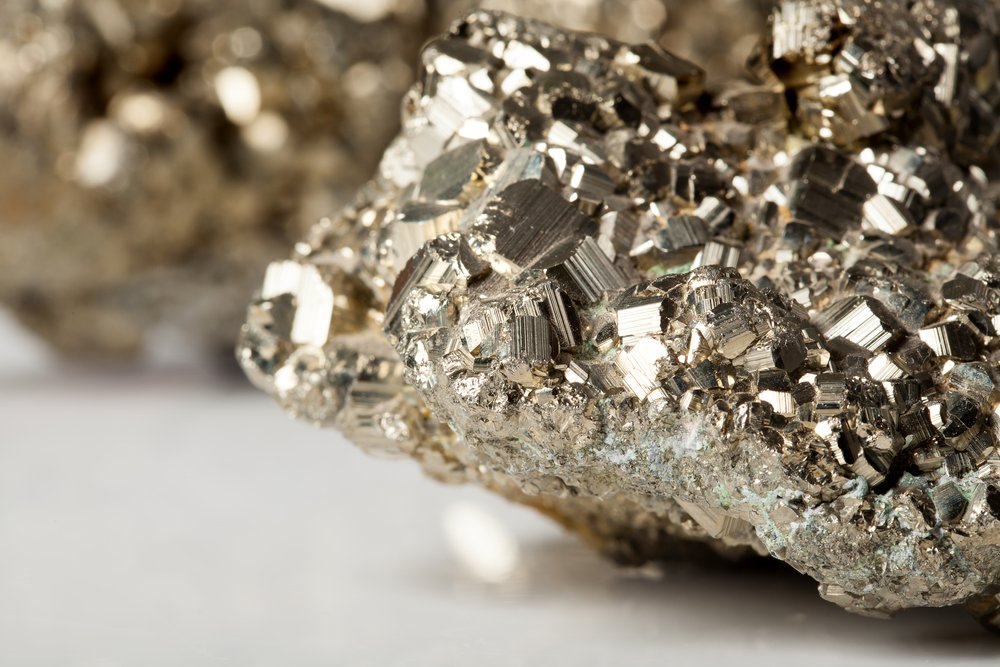
Pyrite, or Fool’s Gold, is a cubic form of iron sulfide. It often occurs in areas that previously had hydrothermal vents. Pyrite’s formation is associated with many other sulfide minerals, including things like marcasite. The brassy color of the stone and its close association with gold in the wild has made it a pain for prospectors since they began pulling gold from the earth.
Pyrite actually had another trick up its sleeve that we didn’t discover until recently. The crystal matrix of pyrite actually traps nanoparticles of gold. Pyrite from regions with gold can contain a surprising amount of the stuff, up to .25%. For most ores that would be low, but for gold that’s better than some minerals considered primary ores of the golden metal.
Pyrite is spread across New Hampshire in large amounts. The main areas where it shows up are lead and gold mines. Galena, the main ore of lead, usually forms in the same areas as pyrite. Much pyrite is discarded in mine tailings, making them a good source if you can get legal access to them.
Pyrite is spread around the entire state, but your best bet is to look in areas near known lead or gold deposits. These areas often house pyrite, whether as small crystals or large clusters of cubes.
8. Beryl
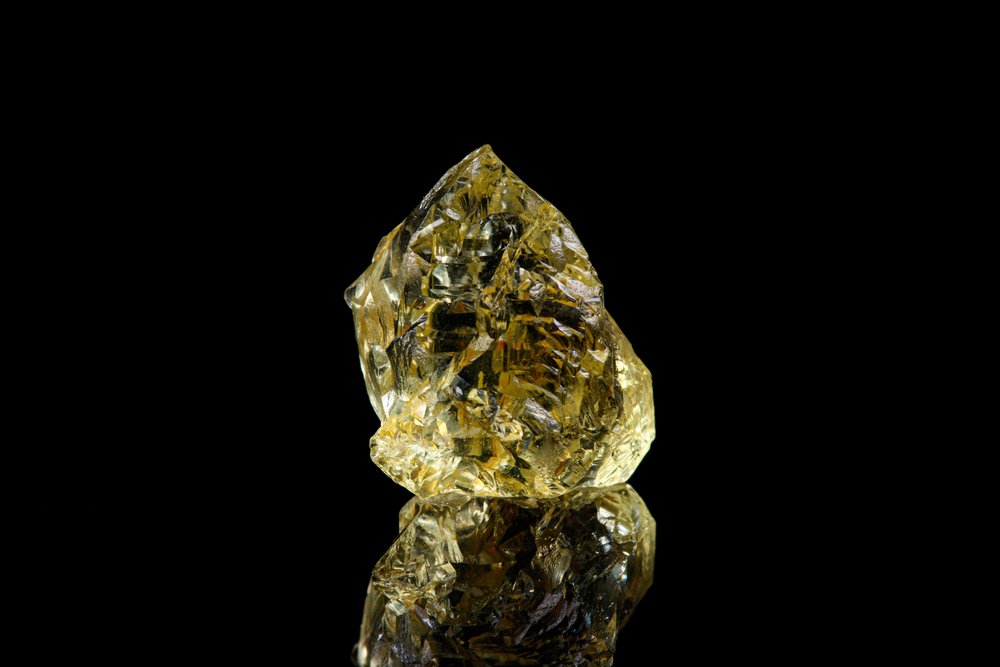
Beryl is a famous family of gemstones, with many varieties being highly prized stones for jewelry. The most commonly seen are emerald and aquamarine but the same family also contains more exotic gems like morganite, heliodor, and bixbite. Beryl is octagonal in form and much harder than most stones at an 8.0 on the Moh’s scale.
In addition to gem use, beryl is the source of the metal beryllium. It’s more important than most realize, being heavily used in electronics and other technological applications. The material is actually of strategic importance in military matters, and it was closely guarded during the Cold War. These days bertrandite is the primary ore of beryllium used, due to the dangers of mining beryl in large amounts.
New Hampshire has an incredible density of beryl spread through the granite and pegmatites of the state. The beryl from the state is mainly yellowish to yellow-green with some blue varieties close to aquamarine found as well. The material here is most suitable for mineral specimens, very little gem-grade beryl is found in the state.
That said, New Hampshire also hosts the area with the highest beryl concentration in the world. If you’re on the hunt for this crystal then you’ll want to take a look at Beryl Mountain, but it can be found across the entire state’s granite and pegmatite formations in various amounts.
9. Garnet
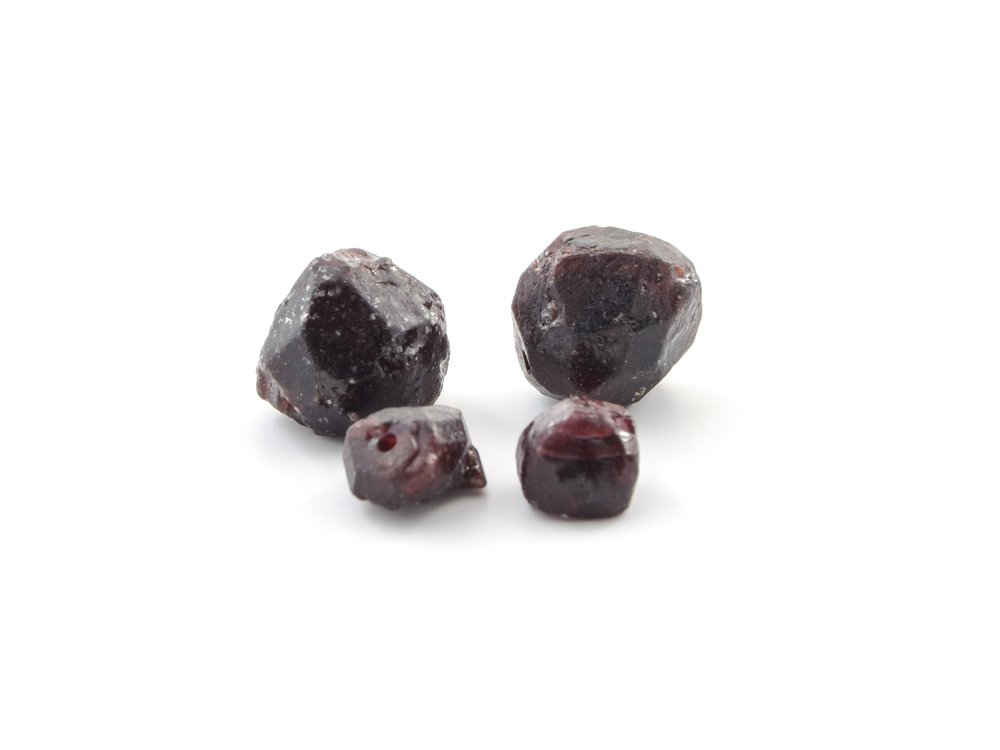
Garnet is one of my favorite gemstone families. Garnets are mainly known for their red-to-black dodecahedral (12-sided) crystals. They’re most often found as mineral specimens in mica formations, with gem-grade material being rare compared to the bulk of the output in most locations. Garnets can range from yellow to red to bright green depending on their makeup, and there are even occasional blue specimens unearthed.
Garnet families are separated by minor chemical differences. The garnets found in New Hampshire are generally of the almandine variety. Almandine garnets are valuable as gemstones, but they’re most often used as an abrasive. Almandine garnet is the preferred abrasive for waterjet cutters, for instance. New Hampshire has continuously produced abrasive garnets since 1910.
The garnets in this state are usually found in mica formations, making them rarer than many of the crystalline minerals also found in New Hampshire. They’ll often be found alongside material like staurolite since they form in the same bedrock. These garnets are usually small and opaque, but there are gem-grade specimens found on occasion.
Garnets can be found across the state, but the best areas for rockhounds appear to be Ruggles Mine, the Deer Hill Mineral Collecting Area, and the Lord Hill Mineral Collecting Area. Anywhere else you should be looking for mica outcrops, where garnets will be plentiful.
- Online rock and mineral club for collectors of all levels!
- Find community with like-minded rock and mineral enthusiasts.
- Monthly Giveaways!
- Free Access to Entire Digital Library of Products (annual memberships)


